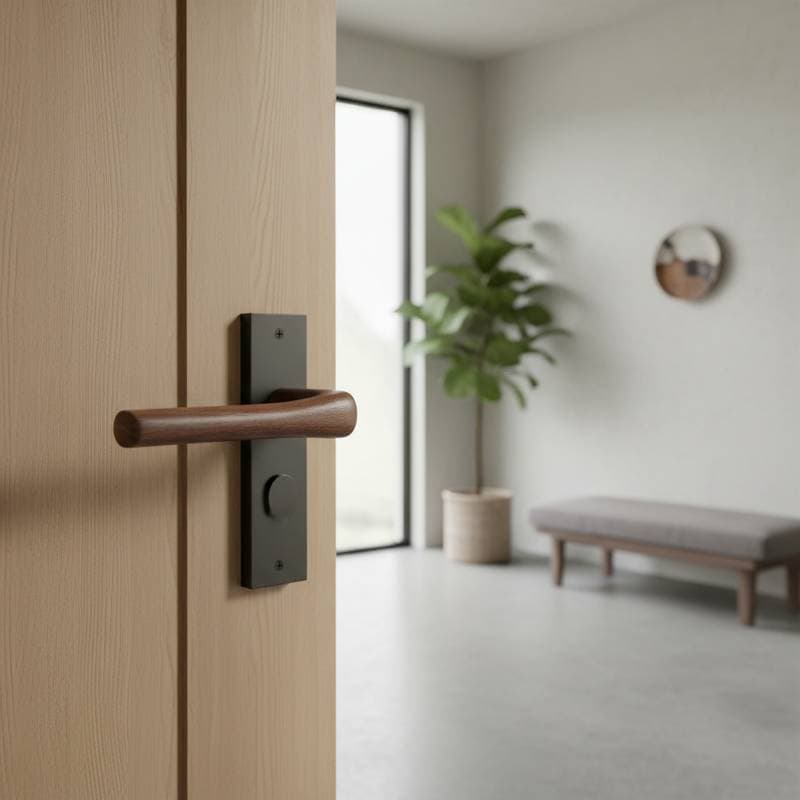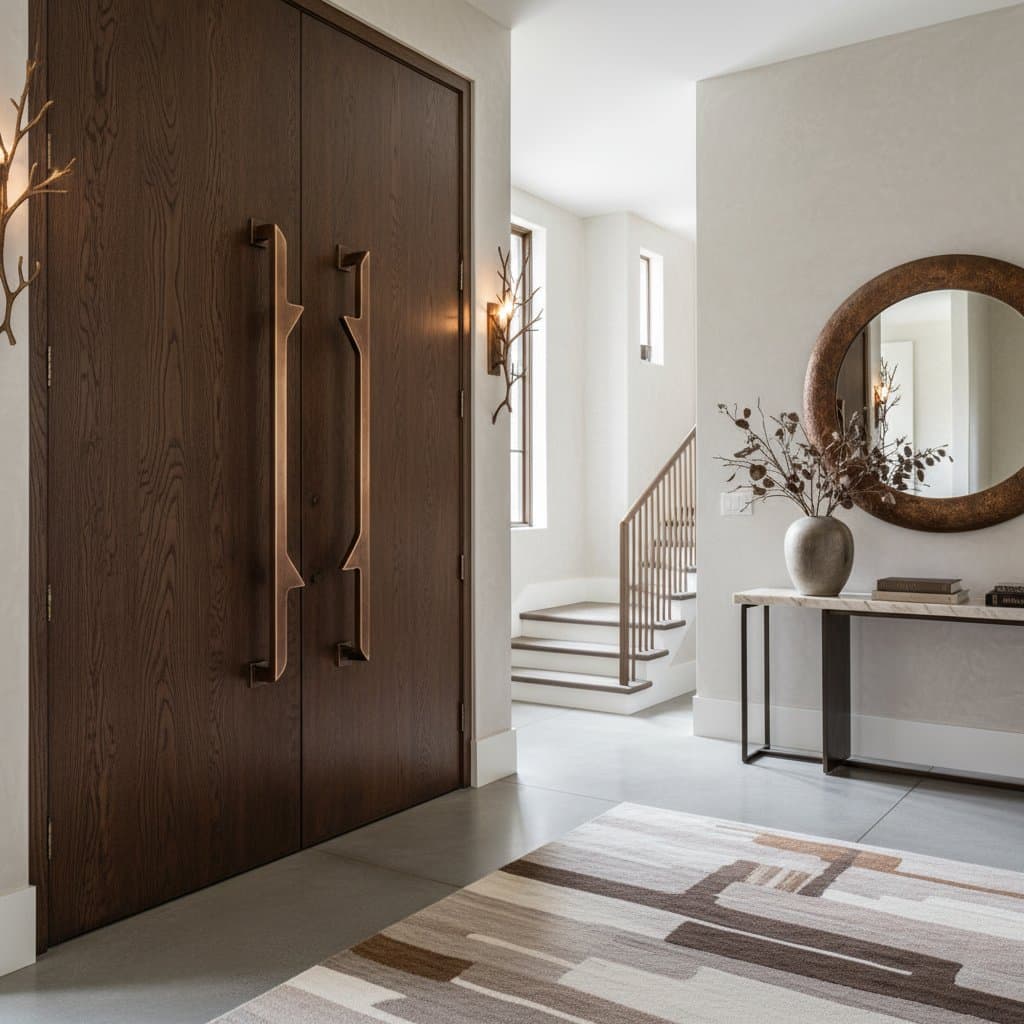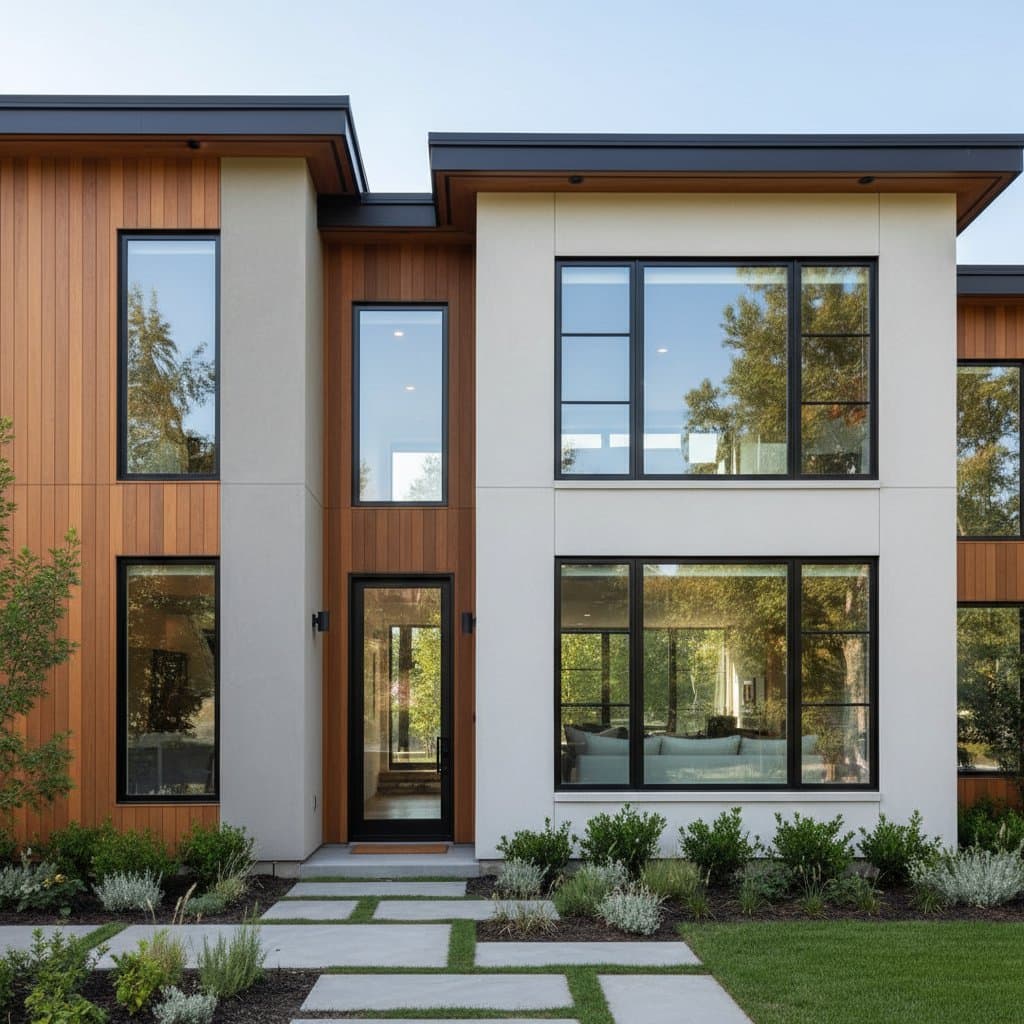Why Japandi Door Handles Command $800+ Prices in 2025
Japandi interior design influences every element of a home, turning even door handles into subtle expressions of style and intention. These pieces exceed $800 not through extravagance, but through a commitment to quality that aligns with the philosophy of balance and authenticity. Homeowners discover value in hardware that enhances daily interactions while enduring over time.
Grasping the Japandi Aesthetic
Japandi merges Japanese minimalism, which emphasizes simplicity and tranquility, with Scandinavian design's focus on functionality and natural warmth. This style prioritizes clean lines, organic textures, and materials that foster a serene environment. Door handles in this tradition must integrate seamlessly, providing both utility and visual calm.
Handles feature understated forms in materials like brushed brass or smoked oak, avoiding ornate details. They complement spaces with light wood tones, neutral palettes, and proportional layouts. Select a handle that aligns with your room's scale; for instance, a slender lever suits narrow door panels, while a broader grip fits larger entries.
Premium Materials and Artisanal Craftsmanship
Superior Japandi handles employ materials chosen for their aging qualities and environmental impact. Solid bronze offers a rich patina over years, untreated brass provides subtle sheen, and sustainably harvested woods like oak ensure ethical sourcing. Artisans inspect each piece for uniform grain and density to guarantee consistency.
Production involves hand-sanding for tactile smoothness, precise polishing to highlight natural veins, and custom shaping for flawless door integration. These steps demand skilled labor, extending timelines but yielding handles that operate silently and resist wear. Expect a lifespan of 20 to 50 years with proper care, far surpassing standard alternatives.
Evaluating Materials and Associated Costs
| Material Type | Initial Cost | Lifespan | Maintenance | Best For |
|---|---|---|---|---|
| Brass | High | Long (30+ years) | Occasional polishing to control patina | Interiors seeking warm, evolving elegance |
| Bronze | Very High | Very Long (50+ years) | Minimal; patina forms naturally | Timeless, understated minimalist settings |
| Oak or Ash Wood | Moderate to High | Medium to Long (20-40 years) | Periodic oil application to prevent drying | Rooms with abundant natural light and organic vibes |
| Stainless Steel | Moderate | Long (25+ years) | Simple wiping; resists corrosion | Sleek, high-traffic modern environments |
Brass and bronze justify elevated prices through their depth and resilience, developing character that mass-produced items cannot match. Wood introduces warmth but demands attention to humidity levels. Stainless steel provides affordability yet misses the nuanced touch central to Japandi.
Production Philosophy and Limited Scale
Most Japandi hardware emerges from small ateliers rather than factories, emphasizing bespoke quality over volume. Limited editions undergo rigorous checks at each crafting stage, from forging to final assembly. This scarcity elevates demand among design enthusiasts.
Designers collaborate with makers to refine ergonomics, ensuring a handle's curve supports hand pressure without strain. Test prototypes under various lighting to verify how shadows accentuate form. Such meticulous adjustments underpin the premium valuation.
The Precision of Minimalist Design
True minimalism demands exactitude, where every curve and joint reflects expertise. Japandi handles conceal mechanisms for a seamless look, requiring advanced milling techniques. This elimination of excess translates to higher labor costs but results in pieces that feel intentional.
Users experience these handles through their cool metal grasp or warm wood texture, reinforcing the home's tranquil mood. Opt for a finish that responds to your climate; brass thrives in dry areas, while wood suits controlled humidity.
Durability and Sustained Investment Value
Japandi handles withstand decades of use, with mechanisms engineered to prevent sagging or sticking. Finishes evolve gracefully, as brass warms to gold hues and bronze deepens to earthy tones. This maturation adds aesthetic layers without intervention.
Over a home's lifecycle, the upfront cost yields savings by reducing replacements and repairs. Sustainable materials further align with eco-conscious choices, minimizing waste through extended utility.
Practical Installation and Upkeep
Verify door specifications before purchase, including thickness from 1.375 to 1.75 inches and latch bore alignment. Engage a professional for installation to achieve level mounting and secure fastening, which averts operational issues.
Maintain bronze with a soft cloth and pH-neutral cleaner quarterly; apply beeswax to wood biannually to seal against moisture. Store spares in a dry cabinet to preserve integrity. These routines extend performance and retain the handle's refined appearance.
Harmonizing with Lifestyle and Design
These handles excel in serene settings with diffused lighting, beige walls, and linen furnishings, creating unified tranquility. They appeal to those who value spaces free of visual clutter, where each touchpoint promotes mindfulness.
The ergonomic design ensures comfortable daily use, from a guest room's light lever to a kitchen's robust pull. This integration deepens emotional ties to the home, embodying Japandi's essence of purposeful existence.
Selecting the Ideal Japandi Handle
Evaluate your needs systematically when considering these investments:
- Daily Use Patterns: Prioritize brass or bronze for high-traffic doors to handle frequent operation.
- Finish Harmony: Match tones with cabinet hardware or flooring for cohesive flow.
- Care Preferences: Choose low-maintenance options if upkeep feels burdensome.
- Visual Alignment: Select textures that echo room elements, like matte for soft schemes.
- Fit Compatibility: Measure door profiles to ensure seamless retrofitting.
Embracing Enduring Quality in Your Home
Investing in Japandi door handles affirms a dedication to craftsmanship that outlasts trends. These elements weave patience and material respect into your living narrative, fostering spaces of lasting calm and refinement.






